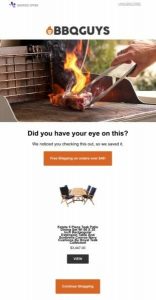In an era when the average business buyer only contacts a brand when he/she is 67 percent through the buying process, there’s every reason to make sure that you’re reaching prospective customers at every stage of their research, not just when they’re ready to buy. Otherwise, when buyers finally do start to contact vendors, you may not even be part of the conversation.
 This is especially true for technology marketers, and doubly true for those in nascent or emerging categories, when much of the marketing challenge may consist of convincing buyers that they have a problem to solve in the first place. Smart technology marketers look to capture buyers early on in the sales cycle, then engage them in a consistent nurture campaign to build credibility, trust, and to position their solution favorably for when the buyers are ready to engage with sales.
This is especially true for technology marketers, and doubly true for those in nascent or emerging categories, when much of the marketing challenge may consist of convincing buyers that they have a problem to solve in the first place. Smart technology marketers look to capture buyers early on in the sales cycle, then engage them in a consistent nurture campaign to build credibility, trust, and to position their solution favorably for when the buyers are ready to engage with sales.
It’s puzzling, therefore, why so many SEM campaigns in the high tech space focus exclusively on late-stage offers, namely trials and demos. Actually, I know why it is. One reason is a general (short-sighted, in my view) opinion of SEM as merely a tool to find prospects who are ready to buy. But the second reason is because technology marketers (and their sales counterparts) are impatient, have short term business horizons, and don’t want to “wait around” for leads to be qualified.
However, by limiting paid search (SEM) campaigns (and social ads like LinkedIn also) to prospects who are ready to look at a product, marketers do themselves and their companies a disservice. If you expand your SEM offer strategy to include early-stage content, yes – you’ll generate a mix of leads and not just highly qualified demo-ready prospects – but, if you have the right nurture strategy in place, you’ll end up with many more qualified leads, and a greater ROI, in the long run.
There’s also a smart way to do it.
What do we know about prospects who are ready to download a free trial or schedule a demo? We know that they’re probably in the later stages of their research process, have identified the type of solution they need to buy, and in all likelihood are evaluating vendors. The types of keywords, therefore, most likely to generate late-stage prospects are those related to your brand, product, or product category.
Conversely, early-stage prospects may be far from evaluating solutions. They may not know that such solutions exist. Most likely they’re simply looking to solve a problem. That level of need lends itself to keywords related to pain points, problems, issues, challenges, and opportunities.
The best way to expand your SEM offer strategy, therefore, is to set up separate campaigns with separate and distinct offers, keyword groups, and landing pages:
• a demo or trial campaign focused on brand, product, or category keywords
• an “early stage” campaign focused on pain points, problems, and opportunities
To stress – this strategy is meaningless without a robust and effective nurture strategy in place. Otherwise, you’ll simply to be throwing unqualified leads at your SDR team only to be told “they weren’t ready.”
For a more detailed look at B2B search strategy, download our white paper: “Top 10 B2B Paid Search Mistakes.”
Digital & Social Articles on Business 2 Community(60)






